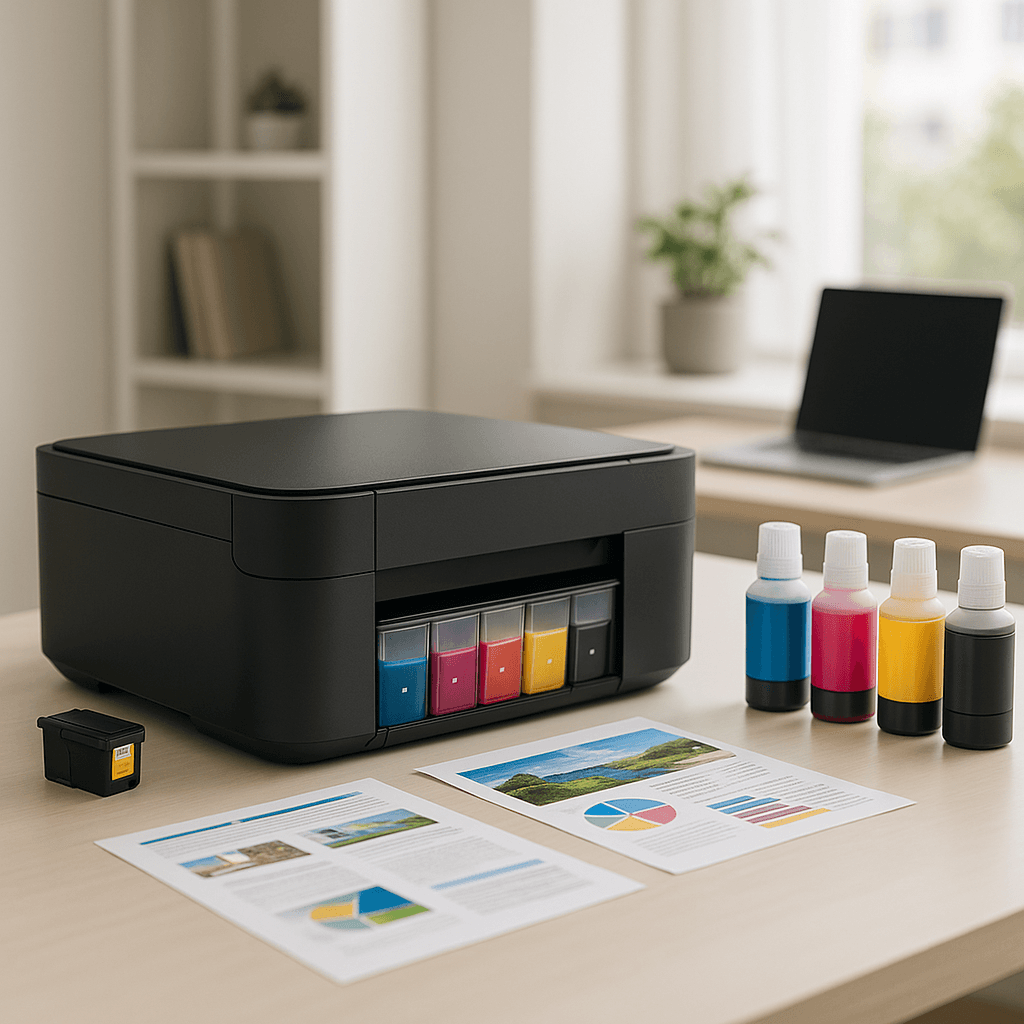Epson's latest EcoTank ET-2980 ink tank printer is turning heads in the home office space, promising to eliminate the cartridge refill headache that's plagued consumers for years. At just $60 for a complete ink refill compared to $135 for traditional cartridges, this printer could reshape how we think about printing costs and manufacturer trust.
The printer industry's cartridge schemes may have met their match. Epson's EcoTank ET-2980 represents a fundamental shift away from the razor-and-blade business model that's frustrated home users for decades, and early reviews suggest it's delivering on its promises.
WIRED's Brad Bourque, initially skeptical about ink tank maintenance and potential spills, found himself converted after testing the $299 printer. The device uses transparent tanks that users fill directly from bottles rather than swapping expensive cartridges—a change that's more than cosmetic.
The economics tell the real story. A complete set of EcoTank bottles costs $60 and promises 5,000 pages of printing, according to Epson's specifications. Compare that to HP's official cartridge bundle at $135, which delivers less than 1,000 color pages and 1,250 black pages per cartridge.
"At $130 more for the Epson than the HP, you'll break even the first time you have to buy cartridges," Bourque notes in his detailed review. The math becomes even more compelling for regular users who've watched cartridge prices climb while page yields remain static.
The setup process addresses one of the biggest concerns around ink tank systems. Unlike early implementations that required careful measuring and squeezing, the ET-2980 uses keyed bottles that prevent cross-contamination between colors. The bottles simply sit upside down on filling ports and automatically stop when tanks reach capacity.
This approach eliminates the microchip restrictions and QR code locks that manufacturers have increasingly used to force customers into first-party supplies. "With an ink tank printer, it feels like there's a handshake agreement between you and the manufacturer that nothing scummy is happening," Bourque observes.
The trade-offs become apparent in daily use. The vertical paper loading system holds just 100 sheets compared to the 200+ capacity of traditional front-loading trays. While this makes envelope printing and specialty media handling smoother, users printing large batches will find themselves refilling more frequently.











